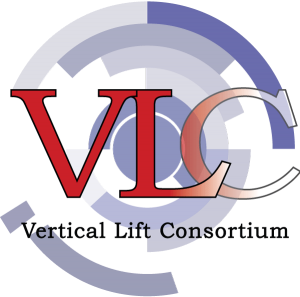Other Transaction Agreement (OTA) Model
An “Other Transaction Agreement” or “Other Transaction Authority” (OTA) is a streamlined vehicle that brings innovative research findings and state-of-the-art prototypes from industry to the Federal Government. OT-based collaborations are not subject to some of the regulations that apply to Federal Acquisition Regulation (FAR)-based acquisitions. OTAs enable fast acquisition of critically needed technologies in areas as diverse as shipbuilding, armaments, satellites, medical devices, and electromagnetic spectrum technologies.
WHY DOES THE GOVERNMENT USE OTAs?

Open Communications = More Relevant Technology Solution
THE BASKET PROVISION
The Basket Provision is another innovative acquisition tool that can be employed within OT-based Consortia. It is not uncommon for industry to propose technology development projects that cannot go forward due to a lack of available funding at the time the source selection decisions are made, despite being deemed valuable by the Government. It is also possible that proposed technology development projects may be valid and approved, but not necessary to accomplish immediate Government needs. In such cases, approved proposals can be held in an “electronic basket” for three years. This allows for subsequent award of the previously-approved proposal in the event of emerging urgent needs, interest in the proposal by a different funding sponsor, end-of-year sweep-up funds or subsequent year funding availability. The provision also eliminates costly, time-consuming start-from-scratch responses to new requirements or funding opportunities.

The basket provision benefits industry by:
- Increasing the chances that their proposal effort will not be in vain, even if it does not result in immediate work.
- Increasing the likelihood of business opportunities because Government may turn to the basket for ways to invest available year-end, sweep-up funding.
It benefits Government by:
- Providing a meaningful, pre-vetted slate of projects for funding that arrives after initial source selection
- Saving the time associated with duplication in the RFP and evaluation processes
WHY DO I WANT TO JOIN?
Unlike the FAR (Federal Acquisition Regulation), the OT-based consortium model allows government and industry to communicate more openly, from requirement generation to the proposal stage; it affords greater technology and prototype acquisition speed, getting solutions to end users sooner; and it emphasizes engaging a diverse range of technology suppliers or all sizes, casting a wider net for capturing ideas and innovations.
FREQUENTLY ASKED QUESTIONS
ARE THERE MEMBERSHIP DUES?
Member companies pay annual dues to belong to an OT-based collaboration.
HOW MUCH ARE MEMBERSHIP DUES?
Dues vary depending on size and type of company, differing from consortium to consortium. Please see Dues Structure page for current dues amount.
WHAT DO MEMBERSHIP DUES AND PROJECT AWARD ASSESSMENTS PAY FOR?
Annual dues and project award assessments pay for consortium activities, such as but not limited to: consortium support, meeting costs and support, member application processing, membership management (“good standing” tracking, etc.), executing and managing the financial processes, dues and assessment invoicing and collection, communications efforts, business development and strategic planning efforts, maintaining public and private websites, and supporting any other subcontractors.
IS BEING A NONTRADITIONAL DEFENSE CONTRACTOR A REQUIREMENT TO JOIN THE CONSORTIUM?
No, membership is open to companies and universities which are capable of making a technical contribution to the advancement of technology that the consortium operates.
WHAT IS A NONTRADITIONAL COMPANY AND HOW TO DISCERN IF MY COMPANY IS ONE?
A nontraditional is a technology provider that does not typically participate in government sponsored research and development. These companies are often small businesses or new companies. They may have innovative technologies, but they lack the contracting resources and experience to navigate the FAR. The OT model is a good way for these companies to access the federal market.A nontraditional means “an entity that is not currently performing and has not performed, for at least the one-year period preceding the solicitation of sources by the Department of Defense for the procurement or transaction, any contract or subcontract for the Department of Defense that is subject to full coverage under the cost accounting standards prescribed pursuant to section 1502 of title 41 and the regulations implementing such section.” 10 USC 2302(9)
For additional information on applicability of cost accounting standards, please click here.
HOW LONG WILL IT TAKE TO GET THE MEMBERSHIP APPLICATION APPROVED AFTER A COMPANY SUBMITS?
An application with all necessary documentation and certificates can be processed in as little as 1-2 business. However, it can take up to several weeks if an applicant needs to obtain a DD2345 or update any expired certificates (SAM.gov, DD2345, CAGE). See the Membership Requirements for a listing of all required certificates and instructions for obtaining them. If you have questions regarding these documents, please contact us at [email protected].
ARE OT CONSORTIA OPERATING IN THE TECHNOLOGY AREAS MY COMPANY IS ENGAGED IN?
ATI builds and manages customized, national technology consortia across technology sectors as diverse as shipbuilding, ordnance, rotorcraft, electromagnetic spectrum, biotechnology, advanced materials development and advanced manufacturing.
